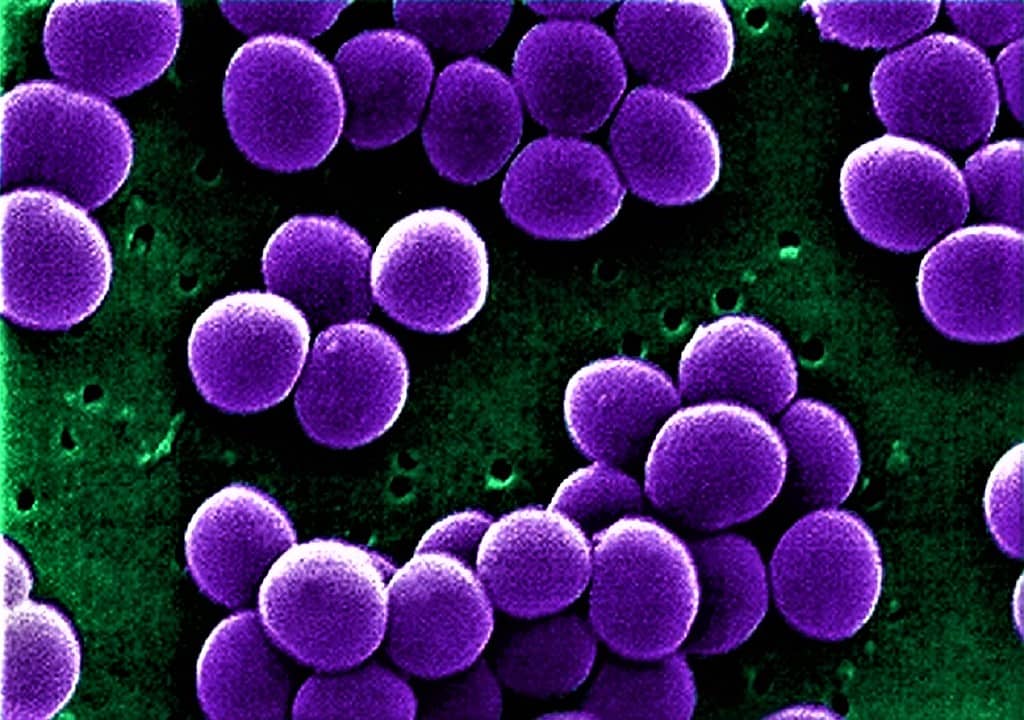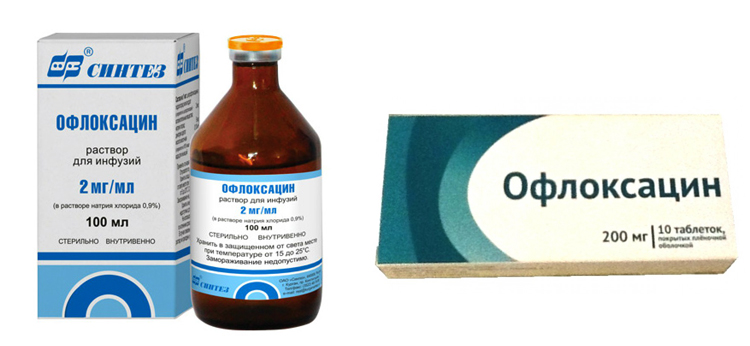Ureaplasmosis is a common female disease of bacterial etiology, accompanied by inflammation of the internal organs of the genitourinary system. Very often, it proceeds secretly, without any symptoms and does not cause any harm to human health, however, it is a carrier and infects others. The main method of transmission is sexual, and domestic cases in medical practice almost never occur. The course of therapy is selected for each patient individually after a series of laboratory tests, depending on the clinical picture of the patient. Let's look in more detail than treating ureaplasma in women. The drugs discussed in this article are considered one of the most effective today. However, starting to take them yourself is not recommended, since each specific case is individual.
general information

As already noted, ureaplasmosis belongs to the group of bacterial infections. Its pathogen is a pathogenic microorganism that parasitizes in the cells of the human body. For a long time, the pathology proceeds in a latent form and does not have any symptoms. The first clinical manifestations occur after the pathogen penetrates deep into the internal organ, causing its structural changes and adversely affecting functionality.
What is the danger of ureaplasma in women? With prolonged absence of treatment, it can cause the following:
- uterine inflammation;
- erosion formation;
- miscarriage during pregnancy;
- decreased immunity and body resistance to other pathogenic microorganisms;
- infertility.
According to medical statistics, approximately 50% of women around the world have ureaplasmosis, but they are not even aware of this. The disease is very serious and can be fraught with various complications, so therapy should be started as soon as possible.
Symptomatology
In order to find the problem in time and go to the hospital, you need to know how ureaplasma manifests itself in women. And now let's dwell on this in more detail. Among the main symptoms, the following can be distinguished:
- discomfort and pain in the groin area;
- characteristic vaginal discharge;
- sexual dysfunction;
- frequent urge to the toilet;
- false angina;
- cramping and burning at the end of urination.
Symptoms, as a rule, appear in the late stages of the development of pathology, when pathogenic microorganisms penetrate through the epithelium into the organ and disrupt its work. In the early stages, mucus, which has a characteristic odor, may become a cause for concern. If the patient notices it at home, then you need to immediately go to the hospital to undergo an examination and start treatment, since the disease is much easier to cure in the early stages.
Basic diagnostic methods
What are they and what is their feature? Modern medicine is at a high level of development, so there are quite a few methods for identifying sexually transmitted diseases. As for the disease under discussion, then most often they take a smear for ureaplasma in women. This type of analysis is accurate and informative, and also allows you to quickly get results. In addition, the following types of laboratory tests can be used for diagnosis:
- polymerase chain reaction;
- linked immunosorbent assay;
- ultrasonography.
As a rule, the examination is carried out comprehensively using several methods. This is necessary in order to obtain the most detailed information about the development of the disease, the degree of damage to internal organs and the preparation of the most effective and safe treatment program. How to treat ureaplasma in women? Preparations are selected by a qualified specialist for each patient separately, depending on his clinical picture.
Therapies

Let's dwell on this aspect in more detail. Unlike many other STDs, the ureaplasma treatment regimen is aimed not only at combating pathogenic microorganisms, but also at eliminating concomitant symptoms, as well as maintaining the body. In the process of therapy, it is very important to maintain the immune system so that the body begins to resist the pathogen. Conditionally, the therapy program is divided into two stages. The first is aimed at killing the bacterium and rid the patient of the clinical manifestations caused by it, and the second - at restoring the body and intestinal microflora after taking medications, as well as reducing the likelihood of developing any complications.
The treatment program is carried out comprehensively and has a restorative effect on the body. At the same time, not only a woman should be treated, but also her young man, because if one partner is a carrier, the second will also be infected. This is especially important at the stage of pregnancy planning. The disease often causes a miscarriage or birth of a baby with various developmental abnormalities and pathologies.
The standard treatment regimen for ureaplasma includes the following:
- taking antibiotics;
- the introduction of vaginal suppositories with antiseptic effect;
- a course of probiotics aimed at restoring the gastrointestinal microflora;
- immunostimulating agents to increase the protective functions of the body.
As has been said repeatedly before, specific medications are selected by the doctor for each patient individually. At the same time, many factors are taken into account, in particular the state of health, the presence of allergic reactions and concomitant diseases that occur in a chronic form. It is worth noting that, even if you know how to treat ureaplasma in women, drugs should only be taken after a preliminary consultation with a doctor. Over time, the pathogen develops antibiotic resistance, which complicates the fight against it. Therefore, a comprehensive examination is required, based on the results of which the doctor will select the most effective drugs.
Drug therapy
What is she like? The basis of treatment for ureaplasma in women is antibiotics. They are divided into three groups, which can be assigned both individually and jointly:
- Macrolides are the most common drugs that are highly effective and cause minimal harm to health. Some of them can be taken even during gestation.
- Tetracyclines are also good remedies that do not affect the intestinal microflora so much. However, due to the chemical properties of the active substance, it is contraindicated during pregnancy.
- Fluoroquinolones - well help with ureaplasma, but also undesirable for future mothers.
Very often, together with antibiotics of the main group, aminoglycoside aminocyclitols are prescribed. These drugs have high antimicrobial activity, increasing the effectiveness of treatment. As a rule, the duration of therapy is 2 weeks, but in some cases, the course may be extended. Throughout the treatment, it is recommended to completely abandon intimacy, and also adhere to a special diet aimed at relieving the load from the digestive system. To support the body, patients are also prescribed:
- vitamin complexes;
- probiotics;
- immunostimulating drugs.
How to treat ureaplasma in women? Preparations are determined exclusively by a qualified specialist. Not all of them consider it necessary to prescribe the use of auxiliary drugs, but the vast majority are of the opinion that they are necessary, since they significantly reduce the risk of relapse.
Antibiotics
Before prescribing specific drugs, it is necessary to establish the type of pathogenic microorganisms that affect the body. Ureaplasmosis can be caused by:
- Ureaplasma Parvum.
- Ureaplasma Urealyticum.
Both types provoke the development of the disease, but require a different approach to therapy, since they respond differently to treatment. According to experts, the first form of pathology is complex. The most effective antibiotics for ureaplasma are:
- "Gentamicin";
- "Doxycycline";
- "Tetracycline";
- Clindamycin;
- Ornidazole
- Ofloxacin.
Let's dwell on each of the drugs in more detail and find out with the help of which one you can quickly and with minimal harm to health get rid of ureaplasmosis permanently.
Gentamicin

It is available in the form of a powder intended for the preparation of a solution for intramuscular injection. Gentamicin injections (instructions for use must be studied before starting use) belong to the group of aminoglycosides with a wide spectrum of action. Active components quickly penetrate the membrane of pathogenic microorganisms, suppressing their vital functions.
The drug is used to treat a number of diseases of various origins:
- inflammation of the bladder;
- acute form of cholecystitis;
- angiocholitis;
- inflammatory lesion of the tubular system of the kidney;
- sepsis;
- purulent pleurisy;
- peritonitis;
- ependymitis;
- infectious diseases of the skin;
- pneumonia;
- folliculitis;
- periungual paranition;
- seborrheic dermatitis;
- varicose ulcers.
According to the instructions for use, Gentamicin injections are made 2 to 4 times a day. The dosage is determined solely by the attending physician, depending on the form and severity of the course of the disease. The duration of therapy is one and a half weeks. Use the drug very carefully, since it can cause various side effects.
Among the most common, it is worth highlighting the following:
- nausea and vomiting;
- increased levels of bilirubin in the blood;
- anemia;
- decrease in the amount of separated blood;
- proteinuria;
- renal failure;
- drowsiness;
- migraine;
- impaired coordination of movements;
- allergic reactions.
Gentamicin is good in that it has virtually no contraindications. Among the main ones is pregnancy and some serious kidney diseases.
Doxycycline

Antibiotics available in the form of capsules with a fast-dissolving shell. The drug belongs to the group of tetracyclines with a wide spectrum of action. Used to combat many diseases of bacterial etiology. Instructions for use of "Doxycycline" (price and reviews are of interest to potential buyers of the medicine) states that you should refrain from taking in the following cases:
- hypersensitivity to the active substance;
- during gestation and breastfeeding;
- children under 8 years old;
- low white blood cell count;
- the presence of allergic reactions to any component that is part of the drug;
- liver failure;
- autoimmune diseases.
Taking the drug may be accompanied by some side effects. Among the main ones are:
- nausea and vomiting;
- digestive upset;
- acute abdominal pain;
- sharp weight loss;
- dysphagia;
- tongue inflammation;
- esophagitis;
- hemolytic anemia;
- skin rash;
- dysbiosis;
- candidiasis.
Before taking, it is recommended to study the instructions for use of "Doxycycline". Reviews (the price of the medicine is from 22 rubles per 20 capsules) state: if the dosage established by the doctor is observed, side effects are extremely rare. This drug is considered one of the best for the treatment of ureaplasmosis today, since it can be taken even during pregnancy, and also does not cause serious harm to health compared with other modern medicines.
Tetracycline
The antibiotic is available in tablet form with a film membrane, which quickly dissolves in the stomach, so that it begins to act after 20 minutes after administration. Like other drugs considered in this article, it has a wide spectrum of action and is used to treat a large number of diseases of bacterial origin.
"Tetracycline" with ureaplasma is taken at 250-500 milligrams every 6 hours. About 70% of the active component is absorbed in the intestine and excreted along with feces. A big plus of the medication is the minimum number of side effects, which allows you to use it to treat many patients. Among the main ones are:
- hepatic dysfunction;
- leukopenia;
In addition, "Tetracycline" is not recommended for use by pregnant and lactating mothers. Also worth noting is the almost complete absence of side effects. Among the most common, allergic reactions and digestive disorders can be distinguished, but they are extremely rare.
Clindamycin

This vaginal cream is effective in many STDs, including ureaplasmosis. It is produced in tubes of 20 and 40 grams with a concentration of the active substance of 2 percent. The drug inhibits the vital activity of pathogenic microorganisms, inhibiting protein synthesis. With it, vaginal tampons are made, which are administered several hours before bedtime for one week. According to experts and patients, "Clindamycin" from ureaplasma is good because side effects are extremely rare. However, in some cases, people still encounter them.
Among the most common are the following:
- vaginal candidiasis;
- irritation of the soft tissues of the genitals;
- various forms of vaginitis;
- menstruation failure;
- uterine bleeding;
- discomfort and pain in the vagina;
- violation of the urination process;
- endometriosis;
- glycosuria;
- nausea and vomiting;
- increased gas formation in the intestine;
- loose stools or constipation;
- skin rash;
- itching and burning in the groove.
As for contraindications, all patients can use the cream for the treatment of ureaplasmosis, with the exception of cases of individual intolerance to any of the components that make up its composition.
"Ornidazole"
An antiviral drug in the form of capsules with instant film coating. "Ornidazole" from ureaplasma is considered one of the most effective drugs on the market today, as it not only inhibits protein synthesis, but also changes the DNA of pathogenic microorganisms. Dosage can vary from 500 to 2000 milligrams. It is determined by the doctor individually for each patient, depending on the clinical picture.
Among the main contraindications for use, the following can be distinguished:
- neurological diseases;
- dysfunction of the central nervous system;
- early pregnancy;
- breast-feeding;
- hypersensitivity to the active substance.
According to information provided by the manufacturer, taking the drug may be accompanied by the following side effects:
- nausea and vomiting;
- diarrhea;
- allergic reactions;
- heartburn;
- sleep disturbance;
- Dizziness
- trembling of the upper limbs;
- impaired coordination of movements;
- migraine;
- peripheral neuropathy.
If any side effects are detected, you should immediately interrupt the course of treatment and consult a specialist to consult and make adjustments to the treatment program.
Ofloxacin

Powerful antibiotic in the form of coated tablets and infusion solution. The drug belongs to the group of fluoroquinols with a wide spectrum of action. The active substance is rapidly absorbed in the intestine and begins to act, blocking the activity of pathogenic microorganisms. Ofloxacin 400 tablets are not recommended for use in the following cases:
- for the period of gestation and breastfeeding;
- under the age of 18;
- hypersensitivity to active substances;
- hepatic or renal failure.
It is forbidden to start taking the drug on its own without prior consultation with the doctor, since it has a large number of side effects. Among the most common are the following:
- digestive upset;
- jaundice;
- bleeding in the gastrointestinal tract;
- violation of metabolic processes;
- sleep disturbance;
- chronic fatigue;
- fatigue;
- blurred consciousness;
- allergic reactions;
- arterial hypertension;
- in some cases, cardiac arrest;
- impaired heart rate;
- dysuria;
- hyperpigmentation;
- neuropsychic weakness;
- nosebleeds;
- chest pain.
And this is not a complete list of side effects, so before you start taking pills, you should definitely consult a doctor and carefully read the instructions for the drug.
Vaginal suppositories
Used as an additional tool to increase the effectiveness of the main therapy program. They are aimed at maintaining the immune system and reducing the likelihood of developing concomitant diseases. Among the best suppositories for ureaplasma in women, experts distinguish the following:
- Viferon;
- Macmirror
- Polygynax;
- Hexicon
- "Genferon";
- "Polyoxidonium".
All of the above vaginal suppositories have a safe composition, so they can be used even during pregnancy.
Conclusion

This article described in detail how to permanently cure ureaplasma in women, as well as which drugs are best used for this. However, it is better to refrain from self-medication, since it can be fraught with very serious consequences. If you have any suspicions of any STDs, then you should contact a qualified specialist who will prescribe all the necessary tests and select the most optimal treatment program. This is the only way to quickly and permanently get rid of such a dangerous disease as ureaplasmosis.